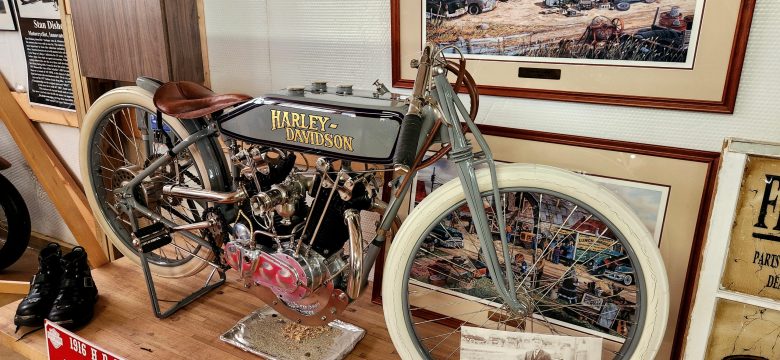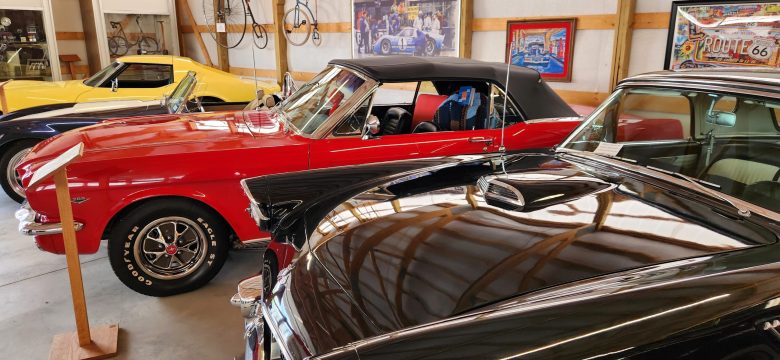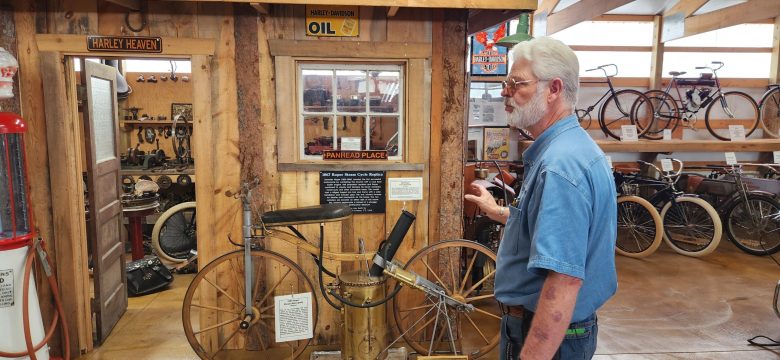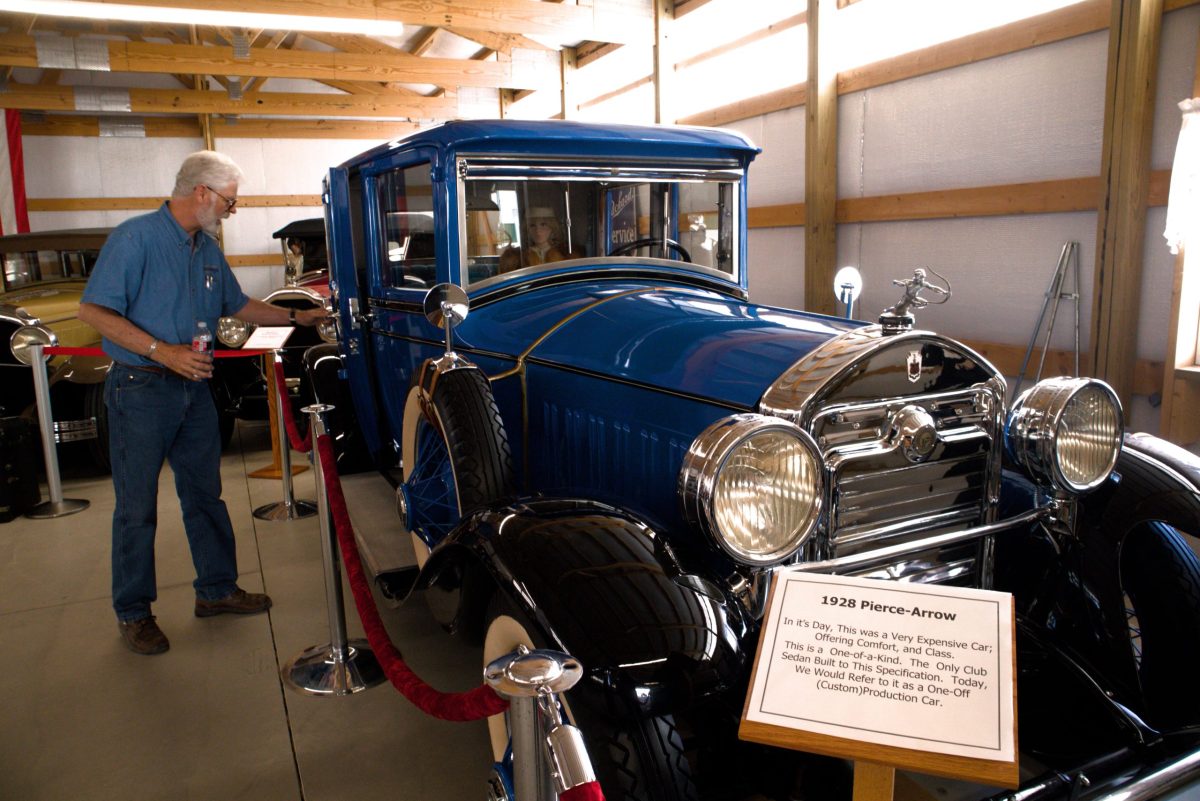In the town of Wallsburg, not more than 30 minutes south of Heber City, sits warehouses among warehouses full of antique, valuable and unique cars, motorcycles, tractors, domestic goods, log cabins and other bits of the past, each with a story to tell.
The collections are managed, curated and maintained by the Richard W. Erickson Foundation, the operating nonprofit in charge of the Antique and Classic Power Museum.
From salt-flat streamliners to the 1939 Lincoln packed with a V12 engine to rows of early-1900s Harly-Davidsons, the compilation of rare and unique items started with the fascination of one Minnesota-born man, Richard W. Erickson.
Erickson first set foot in Utah in the 1950s, when he was en route to California for military boot camp after being drafted to serve in the Korean War.
According to Russell Baker, Erickson’s longtime friend and the man who now serves as chairman of the museum that bears his namesake, Erickson fell in love with the beauty of the western state, and after finishing his service and returning to his Minnesota home, he passed through again.
“He went home and packed his old Ford, tied his motorcycle on the back of the car, came to Utah and started driving truck,” Baker said.
He convinced his brothers to follow him, and soon the family had their own transportation business. But that wasn’t enough for Erickson, whom Baker described as incredibly business-savvy.
“Here’s the Dick Erickson philosophy: why am I driving somebody else’s truck? So he buys his own trucks. And why are we hauling somebody else’s gravel? So we buy our own gravel pit. And why are we hauling somebody else’s asphalt? So we have an asphalt plant,” Baker said. “It just goes and goes and goes.”
With that mentality, Baker said Erickson was able to amass a fairly considerable amount of wealth, and he added that purchasing land in developing communities helped.
It was with that wealth — and the property he watched and purchased as it became available in Wallsburg — that birthed the Richard Erickson Power Show and Museum.

According to Pam Williams, Erickson’s daughter, her father had a fascination with tractors that eventually spread to other forms of equipment, engines and machinery.
“It kind of grew out of control,” Baker said. “He’d build a building, they’d build another building, they’d fill that one, they’d build another building.”
It was through Erickson’s fascination with cars and motorcycles that he eventually crossed paths with Baker, who himself is a curator. The two grew close.
“We were always at the same auctions, the same shows, the same events, and we just got to know each other,” Baker said. “I had a dealership back in the day, and Dick was always sneaking things into my trailers coming back from auctions.
The pair has travelled the country in their quest for fascinating items of history, and the foundation hasn’t stopped growing.
By Erickson’s own design, it didn’t become a public endeavor until 2002.
“I would share my vision of the facility here with Dick, and he loved the vision I had to turn it into a venue for the public and multiple venues on site,” Baker said. “He would say, ‘Oh, that’s wonderful. Wait ’till I die. You do it.'”
When he passed, he named Baker as his successor.
“People give me too much credit,” Baker said. “I have the privilege of having a really good team of trustees and a lot of volunteers, and I just happen to be the coach.”
Along with collecting, curating and publicly presenting the Power Museum’s fascinating and rare bites of history, Baker said the foundation has also gotten involved in broader philanthropic and community endeavors.

On its Wallsburg property, the foundation has built an oval track for high school teams to race cycle karts, maintained space for music festivals and contributed their profits to the Ronald McDonald House and Continue Mission, an organization that aims to provide support for veterans and their families through providing them with recreational and educational events.
This summer, they have three main events for which families can currently buy tickets: the TedFest music festival July 19-21, the Wasatch Boomer Fest (where cover bands regale attendees with the best of boomer rock) Aug. 23-25 and the Antique Power Show June 21-23, when the museum will display and demonstrate the use of its collections of old engines, tractors and other early agricultural tools.
The early Antique Power Show also features tractor pulls, a competition in which registries show off their machines’ capabilities by pulling immense amounts of weight.
“Last year we had 64 entries,” Baker said.
Williams said the foundation and museum grew to what they are today after her parents initially purchased some land in Wallsburg not with the intent to host community events or display their endless collection of fascinating bits of the past, but to call home toward the end of her father’s career.
“Well, 350 acres later and 40-some-odd years it’s like, okay, thanks Dad,” she said. “He set the tone, and we’ve taken it to the next level.”
Even on Erickson’s deathbed, Baker remembered his friend working up until has last moments on Earth.
“He’s in a care center,” Baker said, “and he did not until the last moment realize that his time had come. … He couldn’t even talk.”
At the time, another prominent curator was preparing to sell their collection of about 300 cars.
“I’m sitting on the edge of his bed, and we’re going through the brochure,” Baker said. “He’d see a car and he’d …”
Baker rapped on a table to show how his friend showed interest.
“… How much do you want to spend?” Baker would then ask him. “He’d do fingers, and we’d come up with a number and I would write on there. … To the very last day, he was still buying for the museum.”
Erickson is gone now, but his legacy remains, and the collection housed by his many roofs still grows.
“He built a very large holding,” Baker said. “He took care of his children. He took care of his grandchildren, took care of his church. And the rest of it was left to the foundation, which will take care of all of this and the philanthropy that we do for generations.”
The organization has also been helped by donors and individuals looking for a suitable home for their prized antique items.
Baker explained the impetus for collecting comes not from a collected item itself, but the stories that sit behind the handlebars and under the hoods of the items stationed in the museum.

“History has always been a passion to me. All history, American history especially,” he said. “I’ve been involved with motorcycles and cars since I was a teenager. My first motorcycle, I was 13. I grew up, and I drove muscle cars that I was buying and selling for $700 to $900. Now we’re paying upwards of $50,000 for them.”
In him and others, the items invoke strong emotions.
“When I’m out looking at an auction and when I’m following a lead, I want the story of the item,” he said. “And I want to be able to invoke somebody else’s emotions and stories.”
Both he and Williams stressed the museums’ emphasis on families. They carefully pick through the lyrics of songs bands hope to perform at their music festivals. They invite families to their website to book group tours. During their events, they host trailers of relatives who coordinate their family reunions so they can camp out at the power museum.
And — whether it be through a spark of nostalgia or the magic of the museum’s lack of cell service — it’s not uncommon for them to see grandparents pepper their grandkids with stories they otherwise might have kept to themselves.
“Grandpa starts sharing stories, and the little kids are listening,” Baker said. “I’ve had the moms come up afterwards and say, ‘Thank you so much. He shared more in the last 35 minutes than he has in the last however-many years.'”

